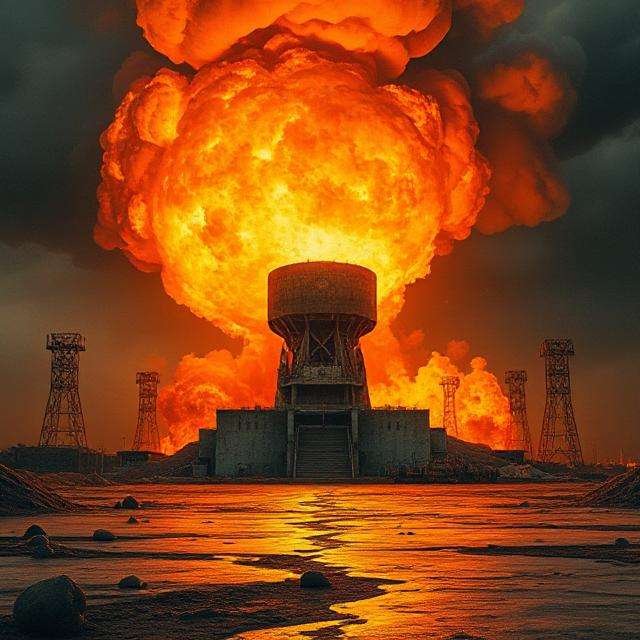U.S.A’s Tariff Expansion
It’s important to clarify that while there were significant trade actions initiated during the previous administration in the USA, the implementation of a blanket tariff increase on “each and every country” with specific, varying percentages didn’t precisely occur in the manner the question suggests. However, there were broad tariffs imposed on many nations, and some targeted at specific countries with higher rates.
Here’s a breakdown of the situation surrounding tariff increases initiated during that period and the subsequent actions by other countries:
Key Tariff Actions Initiated:
While not a uniform percentage increase across all nations, the administration at the time implemented several significant tariff measures that impacted a wide range of countries. The most notable actions included:

- Steel and Aluminum Tariffs (2018 & Expanded 2025): Initially imposed in 2018 at 25% on steel imports and 10% on aluminum imports from most countries, these tariffs were intended to protect domestic industries. In March 2025, these tariffs were expanded to eliminate exemptions and raise the aluminum tariff to 25%. The aim was to close loopholes and further bolster domestic production.
- Tariffs on Chinese Goods (Phases 1-4): Starting in 2018, the United States imposed tariffs on billions of dollars worth of goods imported from China. These tariffs were implemented in several phases and varied in percentage, eventually covering a significant portion of Chinese imports. By April 2025, the tariff on some Chinese goods had reached as high as 125% when factoring in additional increases, particularly citing concerns related to fentanyl.
- “Reciprocal” Tariffs (Announced April 2025): In April 2025, a plan for “reciprocal” tariffs was announced, citing unfair trade practices. This involved a 10% baseline tariff on imports from nearly all countries, effective April 5, 2025. Additionally, higher, individualized tariffs were proposed for countries with significant trade deficits with the US. While a 90-day pause was later announced for the reciprocal tariffs (excluding the baseline 10%), the proposed percentages for specific countries were released. Some of the initially proposed “reciprocal” tariff rates (in addition to the baseline 10%) included:
- Vietnam: 46%
- Cambodia: 49%
- Thailand: 37%
- South Korea: 25%
- Japan: 24%
- Malaysia: 24%
- India: 27%
- Pakistan: 30%
- European Union: 20%
- Australia: 10% (resulting in a total of 20%)
- China: An additional significant percentage on top of existing tariffs, reaching up to 125% on some items.
Actions Taken by Other Countries:
The tariff increases initiated by the US led to a variety of responses from affected countries: - Retaliatory Tariffs: Many countries, particularly those heavily targeted like China, the European Union, Canada, Mexico, and India, implemented retaliatory tariffs on US goods. These tariffs often targeted politically sensitive sectors like agriculture and aimed to inflict economic pain on US exporters. For example, China announced plans for retaliatory tariffs reaching 34% on American products, with the US subsequently proposing further tariff increases, leading to a tit-for-tat escalation. The EU imposed tariffs on a range of US products, including motorcycles, bourbon whiskey, and orange juice. Canada and Mexico also levied tariffs on US goods.
- WTO Disputes: Several countries challenged the US tariffs at the World Trade Organization (WTO), arguing that they violated international trade rules. These disputes often centered on the justification for the tariffs, particularly those imposed on national security grounds for steel and aluminum.
- Seeking Exemptions: Some countries and industries lobbied the US government for exemptions from the tariffs. For instance, some US allies like Canada and Mexico were eventually granted exemptions from the steel and aluminum tariffs after negotiations.
- Shifting Supply Chains: Faced with increased costs due to tariffs, some companies began to explore shifting their supply chains to avoid US tariffs. This included relocating production to countries not subject to the tariffs or increasing production within the US itself. For example, Apple significantly increased its iPhone exports from India to the US in early 2025, potentially to preempt higher tariffs on imports from China.
- Negotiations and Trade Deals: Some countries sought to negotiate new trade agreements with the US to mitigate the impact of the tariffs. The US-Mexico-Canada Agreement (USMCA) was one such example, although it was initiated before the peak of these tariff actions.
- Concerns and Economic Impact Assessments: Many countries and international organizations expressed concerns about the potential negative impacts of the tariffs on global trade, economic growth, and supply chains. Organizations like the IMF and the World Bank issued warnings about the risks of escalating trade tensions.
It’s crucial to note: The global trade landscape during this period was characterized by significant uncertainty and volatility due to these tariff actions and the responses they elicited. The situation evolved rapidly with new announcements, retaliations, and negotiations. While a uniform tariff increase across all countries didn’t occur, the measures taken had broad and significant impacts on international trade relationships.
Buy Old Nokia Dori For New Usages
Also Check :- Top 5 Laptops Under 40000 Amazon








[…] Watch Now :- USA’s Global Tariff Expansion […]